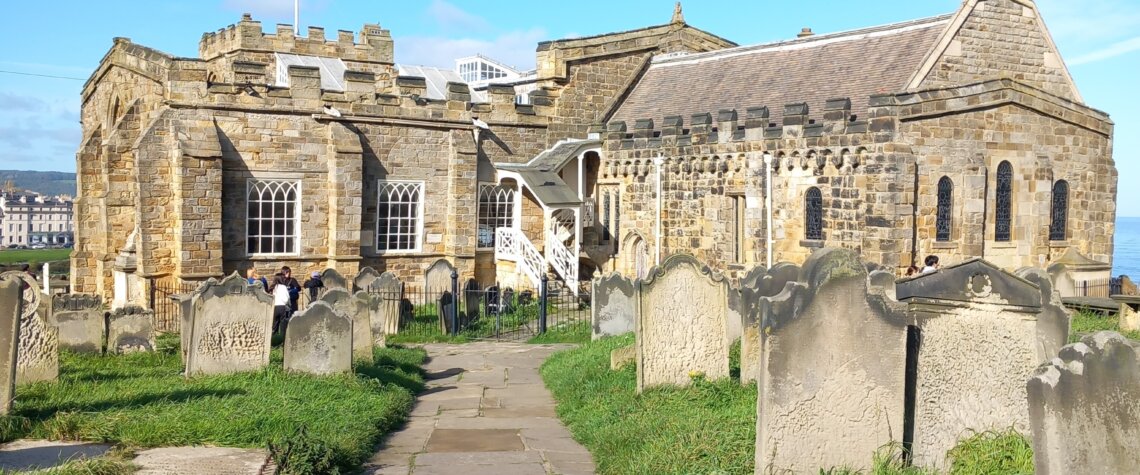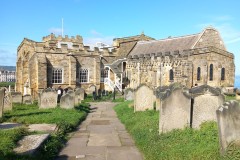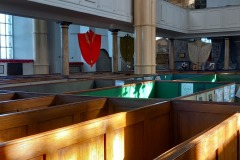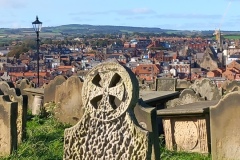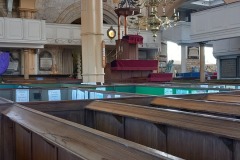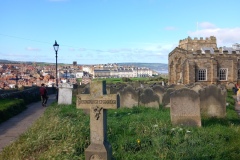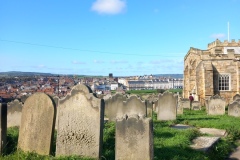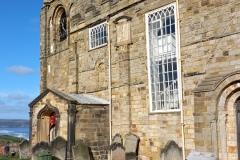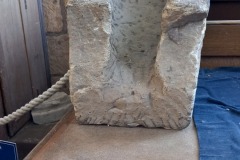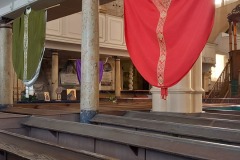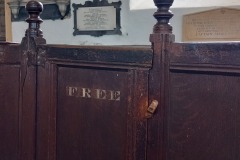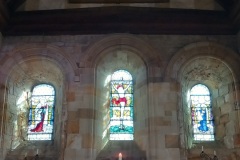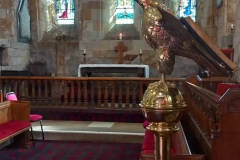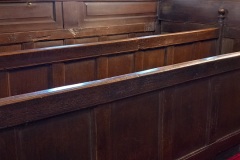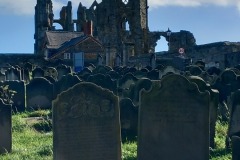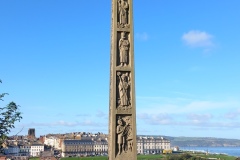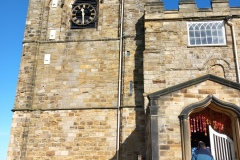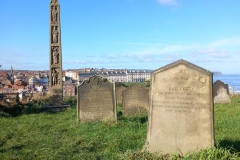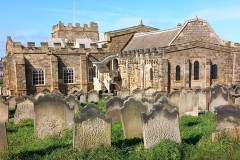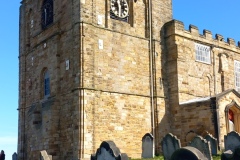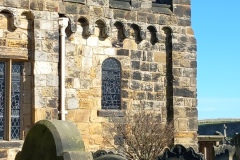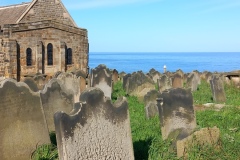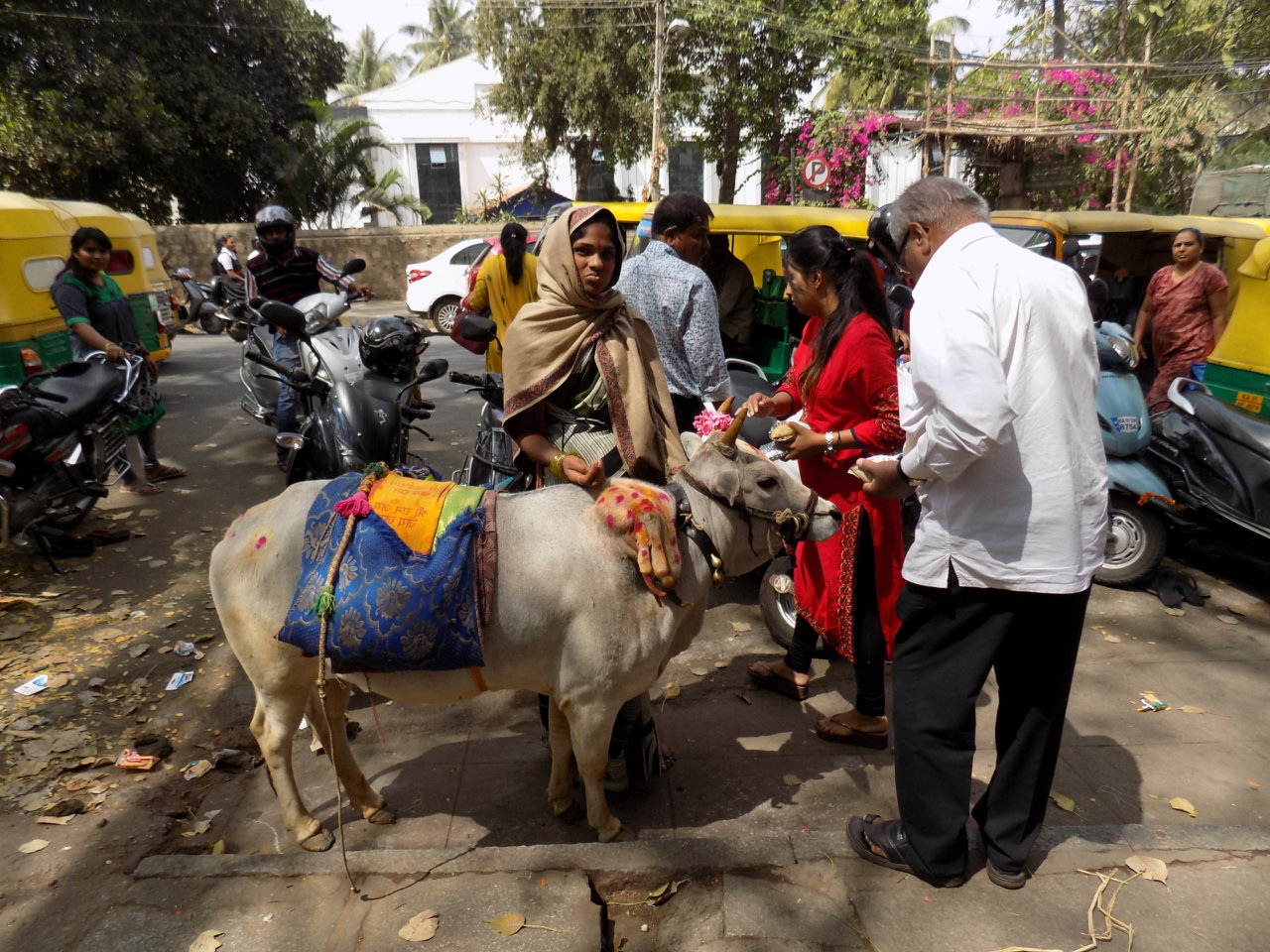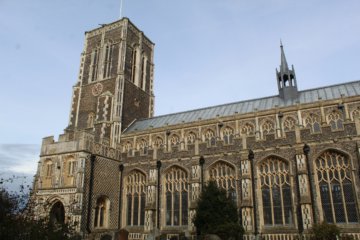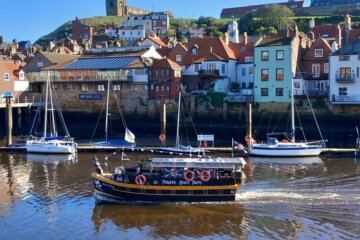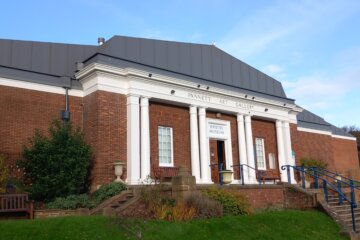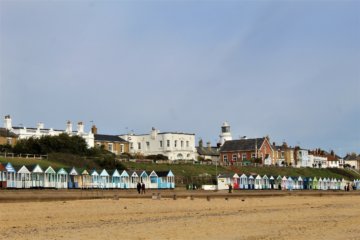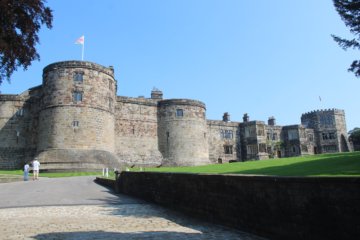This is the latest post in my series about English churches. St Mary’s Parish Church in Whitby stands on the headland above the town, very close to the Whitby Abbey ruins. Nobody knows why it is sited there, rather than in the town itself. This is just one of the unusual features of this church. Read on to find out why you should visit St Mary’s if you are in Whitby.
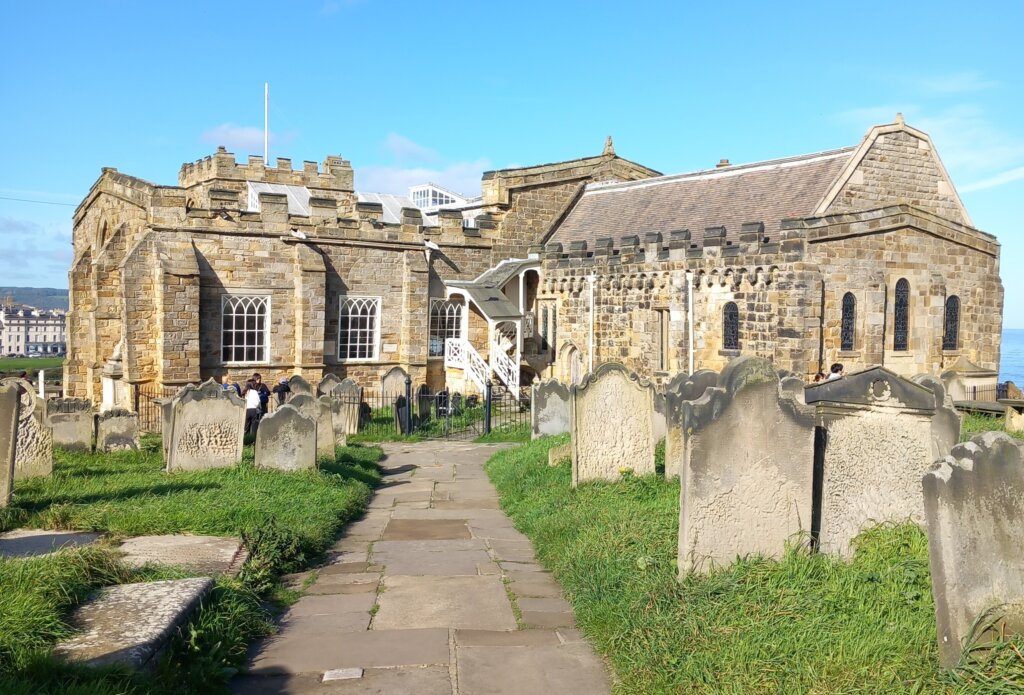
In this article
The History of St Mary’s Church, Whitby
It is not known precisely when St Mary’s church was constructed, but the building’s architectural details suggest that it was probably early in the twelfth century.
Originally, the church belonged to Whitby Abbey. In its first form, it had a chancel and a slightly wider and longer nave. The square, crenellated tower seems to have been added later in the 12th century. The transepts were an even later addition.
When the church was enlarged in 1818, most of the north wall was removed and replaced by columns to accommodate an aisle. Four large square-headed windows were inserted on the south side. The ceilings over the nave were boarded with several skylights.
Of the ring of eight bells in the tower, six are inscribed, ‘Whitby 1762 Lester and Pack of London’. The other two were added in 1897.
The church was designated a Grade I listed building on 23 February 1954.
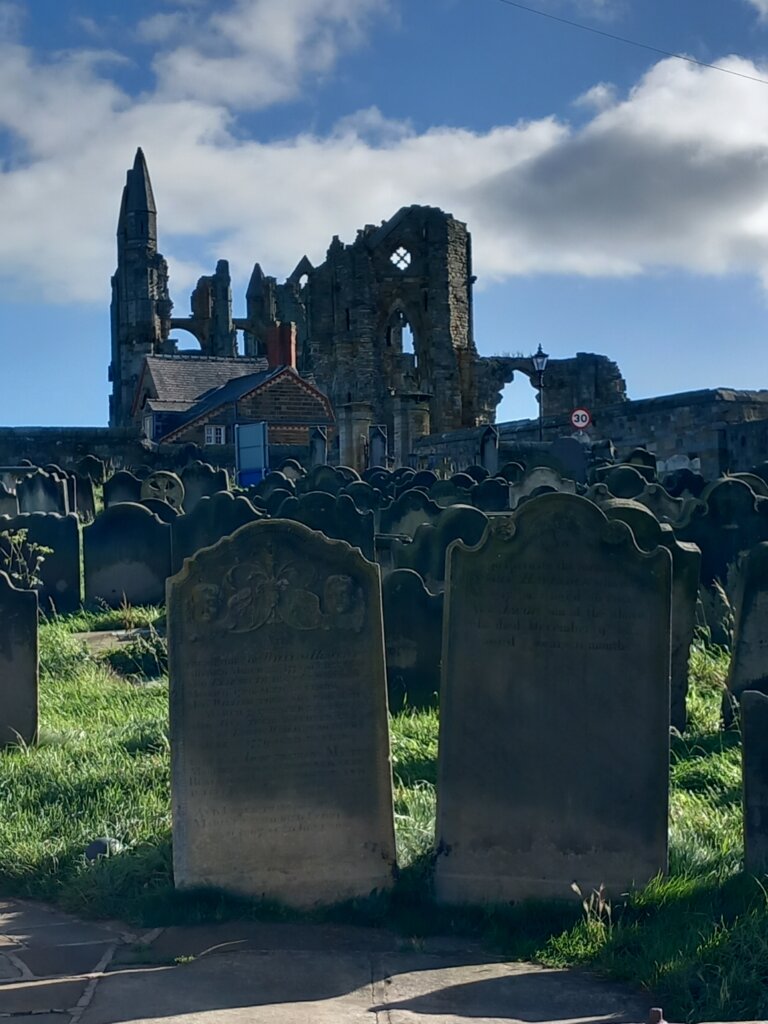
The Exterior of St Mary’s
The exterior of the church has some very prominent Georgian alterations, including the south porch which was built in 1823 and distinctive large square windows with sash lights. A north porch was built in the new annexe later.
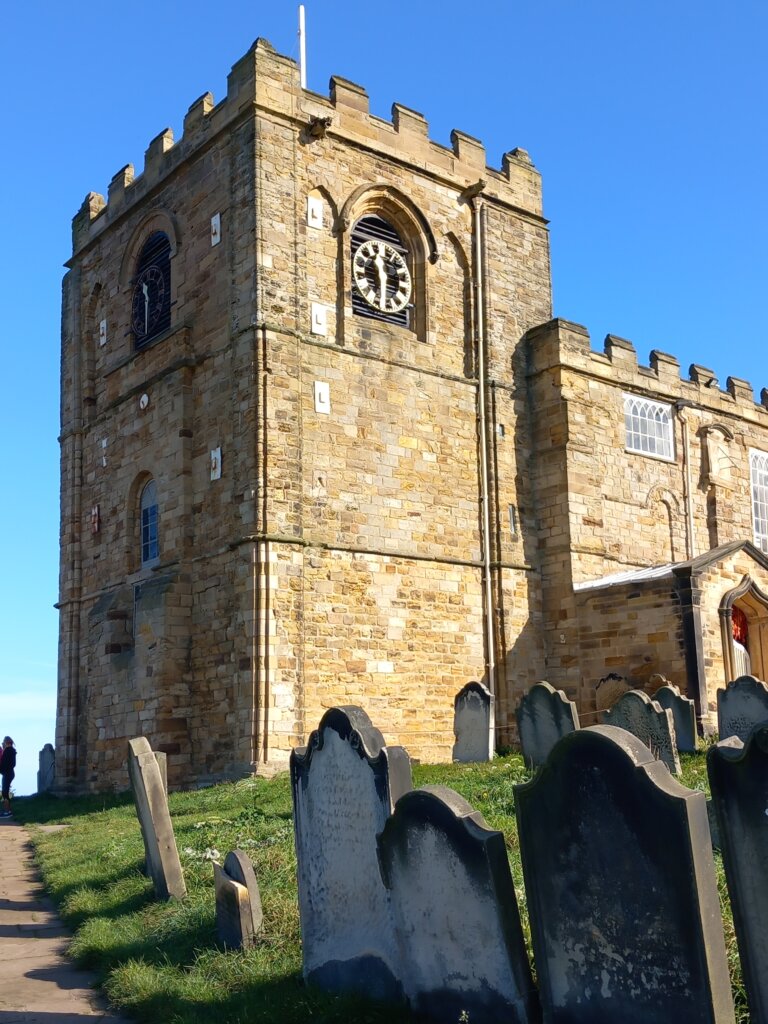
St Mary’s Interior
What makes St Mary’s Church, Whitby truly memorable is its extraordinary interior. It is probably unique amongst English churches in that every space is crammed full of 17th and 18th-century box pews and galleries. Some of these pews are inscribed, ‘For Strangers Only’ to distinguish them from those sponsored by local dignitaries. It is like a labyrinth which is very unfamiliar and awkward to navigate when you first go in. Not everyone faces the pulpit. In this respect, it is similar to Holy Trinity Church in Goodramgate, York. Today, many of the box pews have been taken over by local community groups. They are filled with children’s artwork, handmade items, pictures and photographs, and flower arrangements. It all makes for a colourful, if chaotic, display. I must go back when a service is on. I would love to know how it feels to be part of the congregation in such an unusual church!
The oldest monument in the church is dedicated to Sir Richard Cholmley, the ‘Black Knight of the North’, who died in 1631. The Cholmley family (read about their association with Whitby Abbey here) built their gallery pew, with its barley sugar columns and parapet, right across the chancel arch, thus blocking the view towards the altar for the common people in the pews further back.
The nave and transept have 19th-century galleries accessed by internal and external staircases. There is also a very unusual three-decker pulpit which was built in 1748. It originally stood on props in the middle of the aisle. It was moved to its permanent position in 1847. Uniquely, ear trumpets were fixed to the pulpit in the early nineteenth century when the rector’s wife, who was deaf, sat in the pew below. These were attached to mouthpieces positioned close to the preacher by two long tubes that she placed to her ears.
In his monumental ‘Buildings of England’ series, the architectural historian Sir Nikolaus Pevsner described St Mary’s ‘incomparable’ interior as ‘hard to believe and impossible not to love’. It’s certainly hard to believe! I’m not sure that I love it, though!
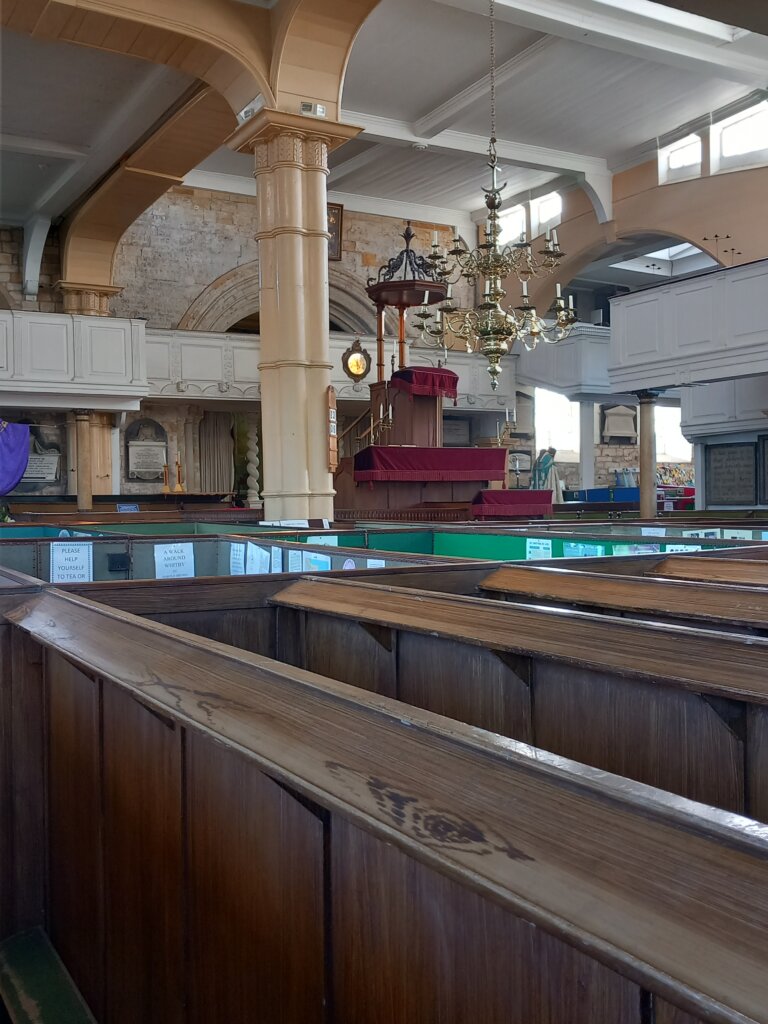
The Connection Between St.Mary’s and Bram Stoker’s Dracula
The graveyard of St Mary’s Church, Whitby inspired Bram Stoker to set one of the scenes in his famous novel, Dracula, there:
There was a bright full moon, with heavy black, driving clouds, which threw the whole scene into a fleeting diorama of light and shade as they sailed across. For a moment or two, I could see nothing, as the shadow of a cloud obscured St. Mary’s Church and all around it. Then as the cloud passed I could see the ruins of the abbey coming into view, and as the edge of a narrow band of light as sharp as a sword cut moved along, the church and churchyard became gradually visible. Whatever my expectation was, it was not disappointed, for there, on our favourite seat, the silver light of the moon struck a half-reclining figure, snowy white. The coming of the cloud was too quick for me to see much, for shadow shut down on light almost immediately, but it seemed to me as though something dark stood behind the seat where the white figure shone, and bent over it. What it was, whether man or beast, I could not tell.
Visitors today come from all over the world looking for Dracula’s grave in the churchyard. Polite notices throughout the grounds, and on the church door, point out that there is no grave to be found, mainly because Dracula is a fictional character!
More Photos of St Mary’s Church, Whitby
Getting to St Mary’s Church, Whitby
Most visitors to Whitby head to the famous ruins of Whitby Abbey by car. There is plenty of parking at the site. Once they are there, some of them call into St Mary’s as an afterthought. This is a shame! There is an alternative way to reach the headland above Whitby town. You can climb the 199 steps from Church Street. This is my preferred way. You can pause to admire the views as you ascend. At the top, you find yourself in the graveyard of St Mary’s. You are struck by this unusual church and its location. The Abbey then almost becomes a secondary sight to see!
A third way to reach St Mary’s would be to take the hop-on, hop-off Whitby sightseeing bus. The views from the top deck on a bright sunny day are unbeatable.
CLICK HERE TO READ ABOUT MORE GREAT THINGS TO DO IN WHITBYIf you’re travelling soon, please use these links!
Are you travelling soon? Use these links when making your bookings. These are the companies we use. It won’t cost you any extra, but we will earn a few pennies to help keep Happy Days Travel Blog going. Thank you!!
- Book your travel insurance with World Nomads. If you are a digital nomad or long-term traveller, try the specialist provider SafetyWing. (Never leave home without protecting yourself, your trip and your belongings!)
- Book your flight with Skyscanner
- Book your accommodation with Booking.com
- Book a tour with Tour Radar
- Book city tours and activities with Viator or Get Your Guide
- Check out our Resource Page for more companies we recommend.
Disclosure: This post contains affiliate links. If you click through for more information, or to make a purchase, it may result in a small commission coming my way. Please note that there is no extra cost to you associated with this. Thank you so much for supporting my site.
Join our mailing list

Sign up to receive our monthly newsletter. Keep up with what we're doing and be the first to receive special offers and insider tips.

